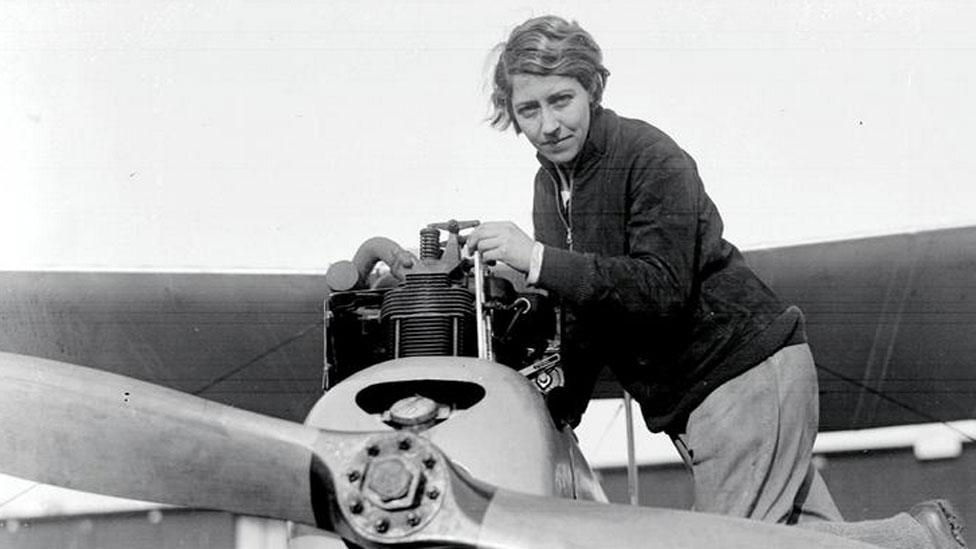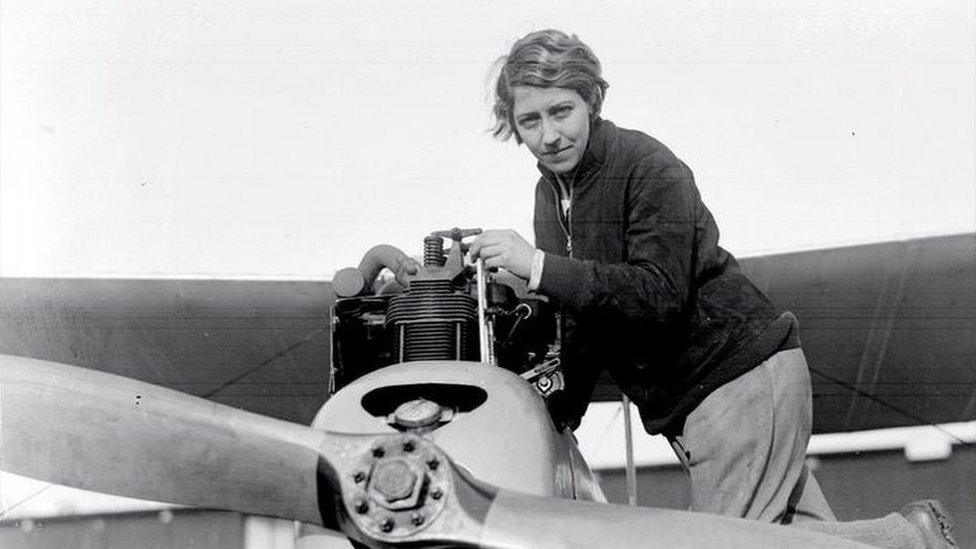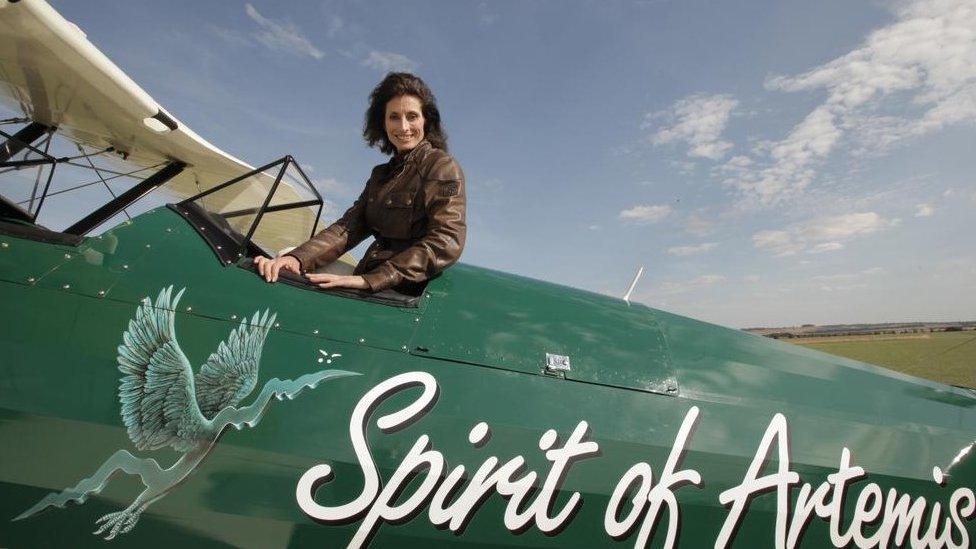Science Museum refuses Hull's historic plane loan request
- Published

Amy Johnson made her historic solo flight from the UK to Australia in May 1930
A request to take pioneer Amy Johnson's aeroplane to her home city of Hull has been refused by the Science Museum.
Ms Johnson became the first woman to fly solo from the UK to Australia when she managed the feat in 1930.
Organisers of a festival to mark the 75th anniversary of her death hoped to put her Gipsy Moth on display in Hull.
But the Science Museum in London turned down the proposal, explaining it would cost "several hundred thousand pounds" to move the historic aircraft.
Rick Welton, director of the Amy Johnson Festival, said he was "disappointed" by the decision.
"I'd like to have more detailed discussions about the loan of the aircraft," he said.
"I think it needs a bit more open-mindedness from the Science Museum.
"People in the city would be so excited to have the plane back - I'm sure we could get some kind of crowd funding."
'Considerable disruption'
A Science Museum spokesman said: "The Gipsy Moth is one of the highlights of our permanent flight gallery and is seen by more than one million visitors each year.
"We did receive a loan request last August but decided not to lend it as removing the Gipsy Moth would have cost several hundred thousand pounds and caused considerable disruption for visitors to the museum."
Ms Johnson was born in St George's Road, Hull, on 1 July 1903.
Her solo flight to Australia took 19 days and she landed in front of a huge crowd in Darwin on 24 May 1930.
The 37-year-old died in mysterious circumstances during World War Two when the RAF plane she was transporting crashed in the Thames Estuary on 5 January 1941.
Her body has never been found.

Amy Johnson died after crashing into the Thames Estuary in 1941
- Published5 January 2016

- Published21 December 2015

- Published1 October 2015
